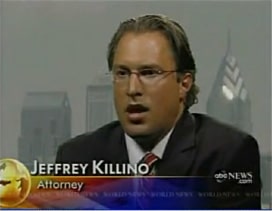During the coldest months of the year, snowplows, salt trucks, and other snow removal vehicles are common sights in many regions of the United States.
But while keeping the roadways clear and safe must be a priority in the winter, these heavy trucks also pose unique dangers of their own, especially when slick roads and low visibility have already made driving hazardous. Given the average snow removal vehicle’s size and weight, the consequences of a crash can be severe and even deadly for those involved.
The Killino Firm’s snowplow accident lawyers believe the victims of preventable crashes are entitled to compensation for their pain and suffering. If you or someone you love was injured or tragically killed in a collision with a snowplow, salt truck, or other snow removal vehicle, call our law firm toll-free at 877-875-2927 to speak with an attorney and learn more about your legal rights.
How Common are Snowplow Accidents?
About 70% of the nation’s roads and highways are located in areas that receive regular snowfalls of 5 inches or more. That means most Americans will occasionally encounter snowplows, salt trucks, and other winter service vehicles in the course of their travels.
Crash statistics for snow removal vehicles are hard to come by, as no federal agency currently tracks these types of accidents. But figures from several states suggest hundreds are involved in accidents every winter, including collisions that cause innocent motorists and pedestrians to sustain severe or deadly injuries.
Iowa, for example, averages 46 snowplow accidents occur every winter. The state has paid more than $1.2 million to repair other vehicles and settle injury claims related to these crashes.
By March 2018, the Minnesota Department of Transportation had already logged nearly two dozen snowplow accidents for the 2017-2018 winter season. Meanwhile, a review of Crash Report Forms in Michigan for calendar years 2012 to 2017 revealed 1,354 snowplow-related crashes.
Common Causes of Snowplow Accidents
The most common contributors to snowplow accidents include:
- Inattention/misjudgment by snowplow driver (38.4%)
- Loss of control (23.2%)
- Inattention/misjudgment by another driver (22.8%)
- Poor visibility (3.7%)
- Blindspot (2.6%)
- Operating near an intersection (2.2%)
Certain environmental factors can also play a role in snowplow-related accidents, including:
- Glazing of wheel tracks (usually occurs between 8:00 a.m. and 10:00 a.m.)
- Refreeze on the roadway (typically between 4:00 p.m. and 6:00 p.m.)
- Slushy road conditions between 25 and 32-degrees Fahrenheit.
Other possible contributors to a crash include:
- Hazardous road conditions.
- Air brake failure
- Excessive speed
- Fatigued driving
- Defective vehicle equipment
- Inability to stop quickly
- Poorly maintained vehicle
- Inexperienced drivers
- Inadequate driver training
- Operating a snowplow while intoxicated
Common Snow Plow Crash Injuries
An accident involving a snowplow or other snow removal vehicle can cause the same types of injuries typically seen after any large truck crash, including:
- Back and Neck Injuries
- Broken Bones
- Concussions
- Facial Injuries
- Internal Injuries
- Lacerations
- Amputations
- Nerve Damage
- Skull Fractures
- Spinal Cord Injuries
- Death
It’s highly recommended that you seek medical attention after a snowplow accident or any other motor vehicle collision. Doing so will ensure all of your injuries are appropriately addressed and prevent even further harm. Your medical records will also become crucial evidence if you choose to seek compensation from the parties responsible for the accident.
Depending on your state’s laws, you may have a claim against the owner of the snowplow, its driver, and the entity that hired the snow removal company. You might also be able to file suit against a manufacturer if a defective vehicle or equipment contributed to the crash, as well as the responsible mechanic if poor maintenance was a factor.
What You Need to Know to Stay Safe Around a Snowplow
A snowplow can weigh over 48,000 pounds – that’s 15 times more than the average passenger vehicle. So, when cars and plows collide, it’s usually the occupants of the smaller vehicle who sustain the most severe injuries. That’s why it’s so important for motorists to proceed with caution around snow removal equipment.
- Keep a safe distance from any snowplow you encounter, and NEVER assume the driver can see your vehicle.
- If you’re following a snowplow, stay between 5-to-10 car lengths behind the vehicle so you’ll have plenty of time to stop should it brake suddenly.
- If you’re traveling on an undivided highway, pull as far to the right as is safe if a snowplow approaches from the opposite direction.
- Always maintain a safe speed, and remember winter weather conditions may require you to drive well below the posted speed limit. Because snowplows tend to travel at a lower rate of speed than other vehicles, be sure to slow down if you see one in front of you.
- Never attempt to pass a snowplow, as blowing snow can block your view of what’s on the other side.
- Avoid driving in winter weather if possible. But if you must, turn on your headlights, so you’re visible to snowplow drivers and other motorists, even during daylight hours.
- It might be difficult to see snow removal equipment, so keep alert for their flashing lights.
- Never allow children to play near the road or street in the winter, as a snowplow operator may not see kids behind or under a pile of snow.
Contact an Experienced Lawyer
Because snowplow accidents can involve more severe injuries and multiple liable parties than a typical motor vehicle crash, you are less likely to have all of your damages covered by insurance. Our law firm has the resources and expertise to handle these complex cases and file a lawsuit on your behalf. If you or a loved one were hurt in a crash involving a snowplow, salt truck, or other snow removal vehicle, please contact us for a free consultation at 1-877-875- 2927.







